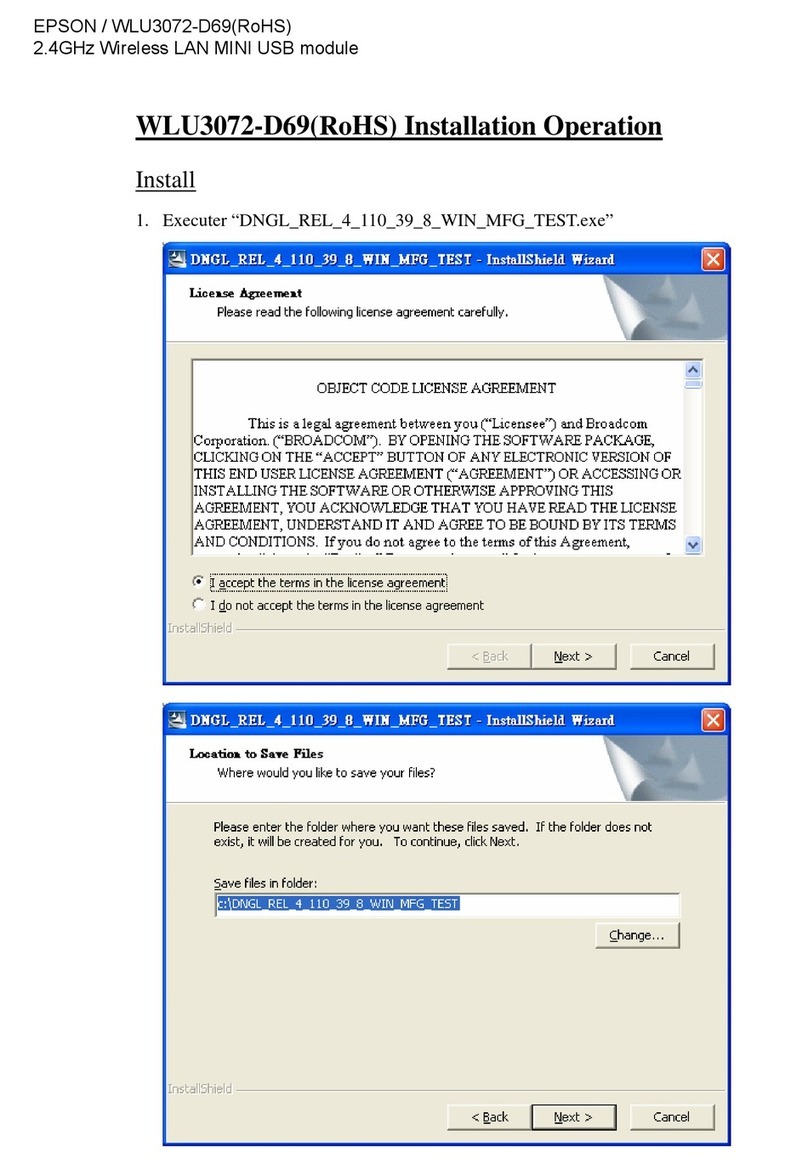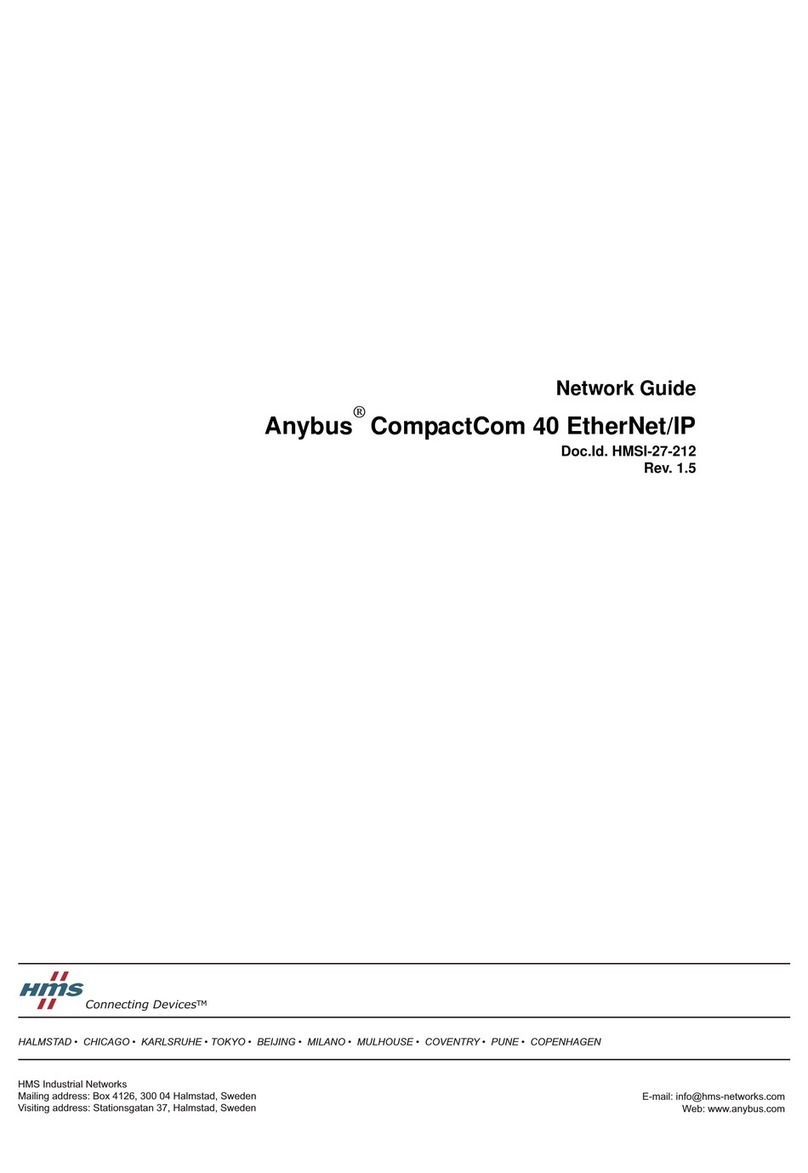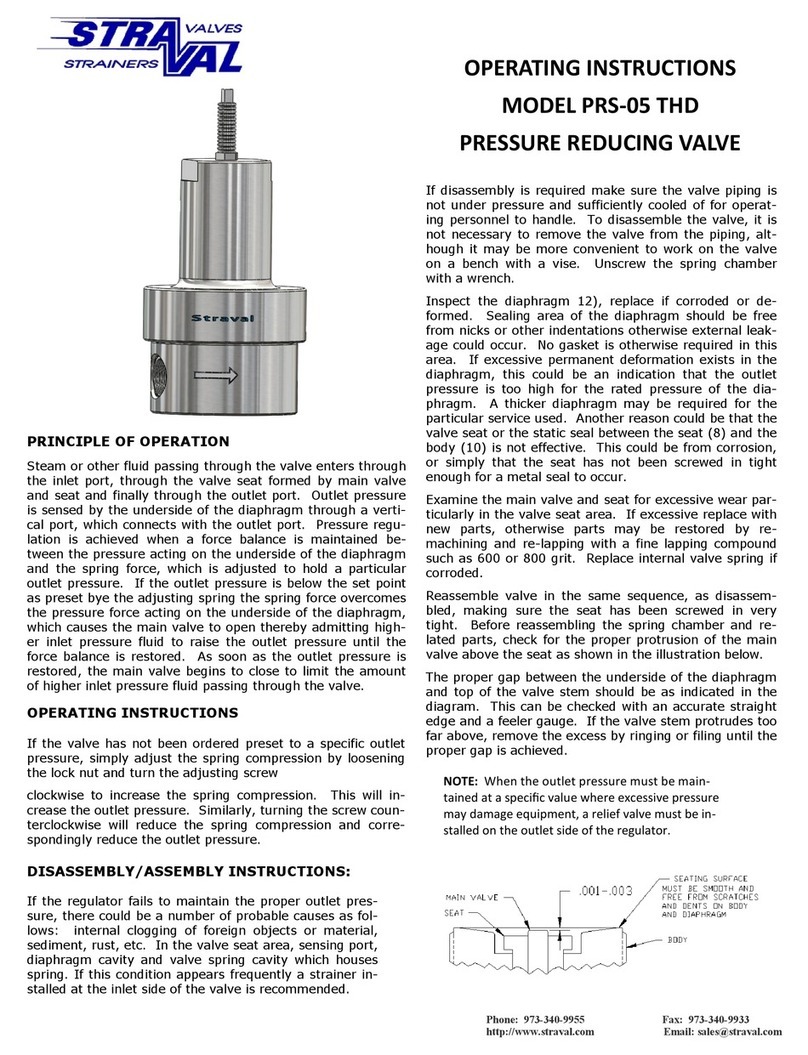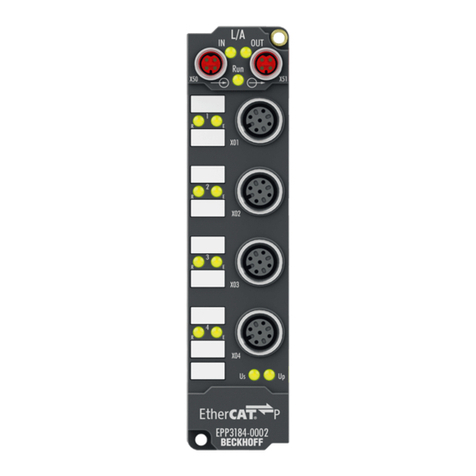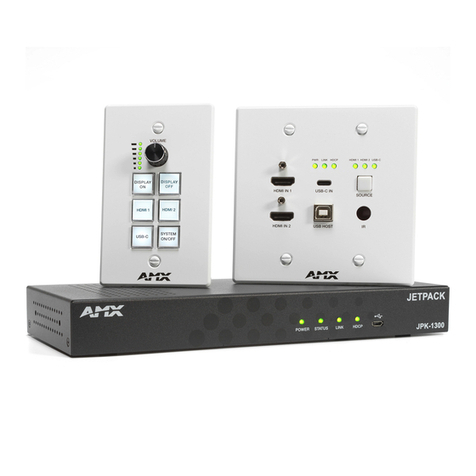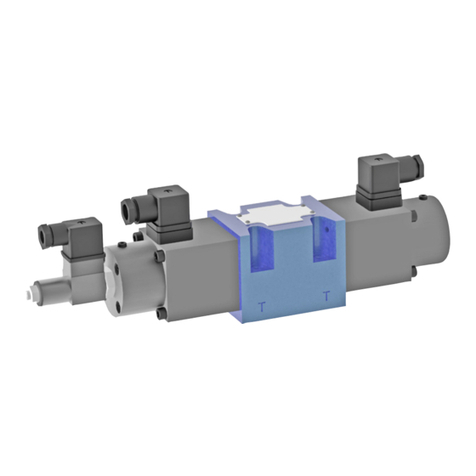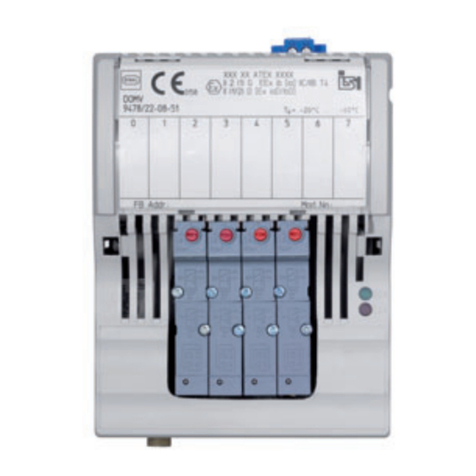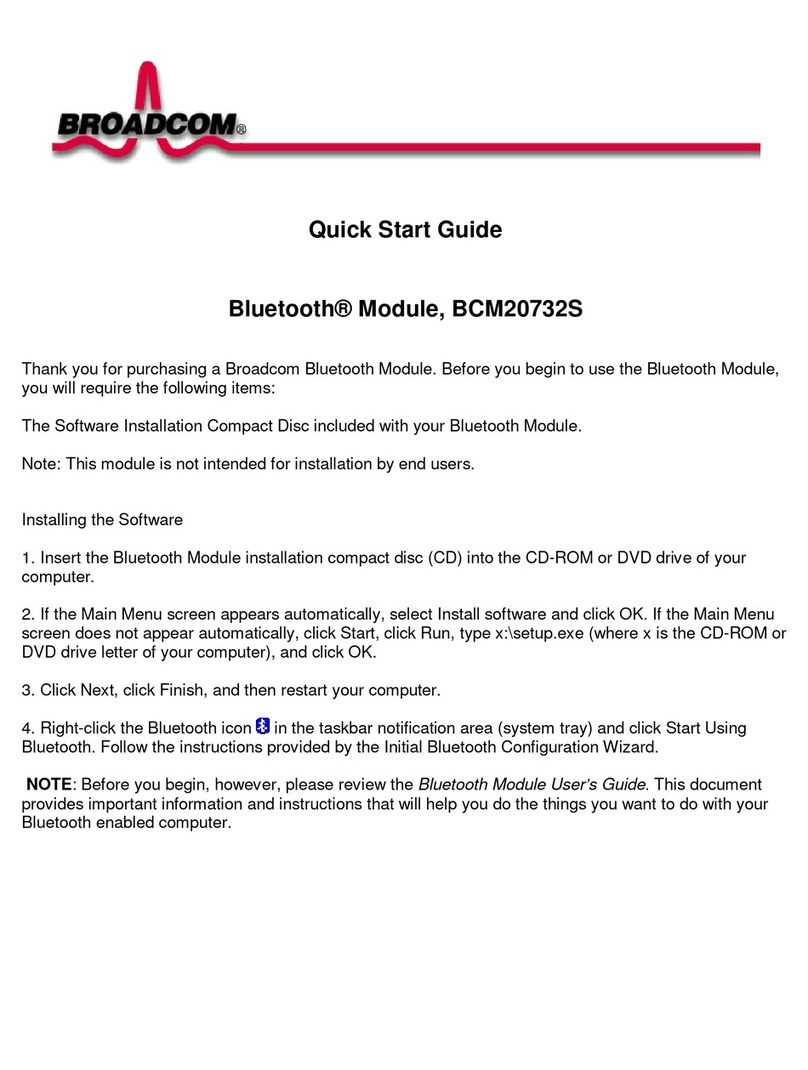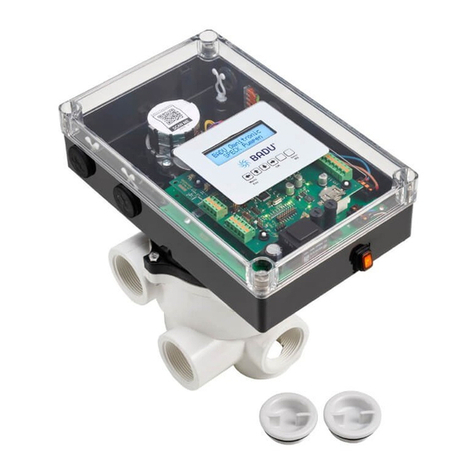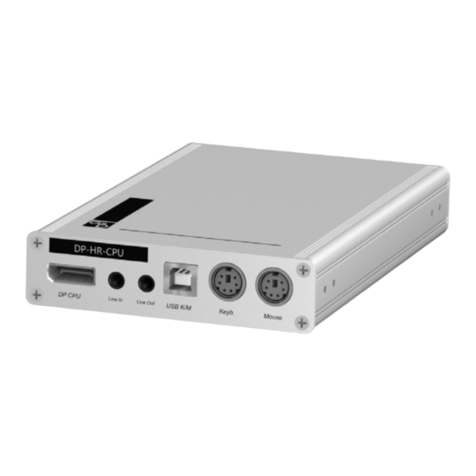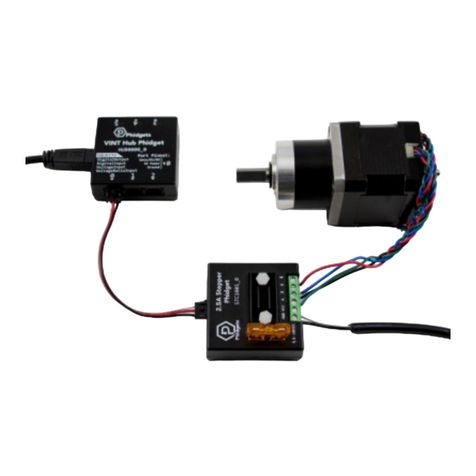Seiko Epson VG-4513CA User manual

INFORMATION
Model :
VG-4513CA
DATE :
12th. Sep. 2013
SEIKO EPSON CORPORATION
8548 Nakaminowa,
Minowa-machi, Kamiina-gun,
Nagano-ken
399-4696 Japan
OUT-13-0473 rev.2

OUT-13-0473 rev.2
INTRODUCTION
1. The contents is subject to change without notice.
Please exchange the specification sheets regarding
the product’s warranty.
2. This sheet is not intended to guarantee or provide
an approval of implementation of industrial patents.
3. We have prepared this sheet as carefully as possible.
If you find it incomplete or unsatisfactory in any
respect, We would welcome your comments.

OUT-13-0473 rev.2
1
SPECIFICATIONS
1. Application
1) This specifications apply to Crystal oscillator VG-4513CA for Alcatel-Lucent.
2) This product is compliant with RoHS Directive.
3) This Product supplied (and any technical information furnished, if any) by SEIKO EPSON CORPORATION.
Corporation shall not be used for the development and manufacture of weapon of mass destruction
or for other military purposes. Making available such products and technology to any third party
who may use such products or technologies for the said purposes are also prohibited.
4) This product listed here is designed as components or parts for electronics equipment in general
consumer use. We do not expect that any of these products would be incorporated or otherwise
used as a component or part for the equipment, which requires an extra high reliability, such as
satellite, rocket and other space systems, and medical equipment, the functional purpose of which
is to keep life.
2. Product No. / Model
The model is VG-4513CA-122.880000-GHCT /GGCT, VG-4513CA-491.52MHz-GFCT.
3. Packing
It is subject to the packing standard of SEIKO EPSON CORPORATION.
4. Warranty
Defective parts which are originated by us are replaced free of charge in case defects are found within 12 months
after delivery.
5. Amendment and abolishment
Amendment and/or abolishment of this specification are subject to the agreement between both parties.
6. Contents
Item No. Item Page
[ 1 ] Absolute maximum ratings 2
[ 2 ] Operating range 2
[ 3 ] Frequency characteristics 2-3
[ 4 ] Terminal description 4
[ 5 ] Electrical characteristics 5
[ 6 ] Test circuit 6
[ 7 ] Timing chart 7-8
[ 8 ] Reflow condition 8
[ 9 ] Dimensions and marking layout 9-10
[ 10 ] Board patterning 10
[ 11 ] Notes 11-12

OUT-13-0473 rev.2
2
[ 1 ] Absolute maximum ratings
Parameter Symbol
Value Unit
Note
Supply voltage V
CC
-0.5 to +5.0 V
Input voltage Vc -0.5 to V
CC
+0.5 V Vc Terminal
Storage temperature range *
T_stg -55 to +125 °C Stored as bare product after unpacking.
* Concerning the frequency change, please refer [8] Environmental and mechanical characteristics.
[ 2 ] Operating range
Parameter Symbol
Value Unit
Note
Min. Typ. Max.
Supply voltage V
CC
3.135 3.300 3.465 V *1
Supply voltage GND 0.0 0.0 0.0 V
Control voltage V
c
0.00 1.65 3.30 V
Output frequency fo - 122.880
491.520
- MHz
Operating temperature range T_use -40 +25 +85 °C
Output load condition L_ECL
- 50 - Ω At Vcc-2.0V
*1 Start up time(0 %V
CC
90 %V
CC
) of power source should be more than 150 µs.
*2 By-pass capacitor (approx. 0.01 µF to 0.1 µF) should be placed closely between Vcc and GND.
[ 3 ] Frequency characteristics
Test condition is Vcc=3.3V, Vc=1.65V, at +25°C, unless otherwise noted.
Output frequency (f
0
) ........................... 122.880000 MHz, 491.520000MHz
Parameter Symbol Value[1 ×10
−
6
] Note
Frequency tolerance *
f tol
±
50 122.88MHz
±
70 491.52MHz
* This includes initial frequency tolerance, temperature variation,
supply
voltage
variation,
and 10 years aging(at 25 °C).

OUT-13-0473 rev.2
3
Output Frequency characteristics
Parameter Symbol
Value Unit Note
Min. Typ. Max.
Pull range
Vc=1.65V±1.65V PR
±100 - -
×10
-6
122.880MHz-GGCT
±150 - - 122.880MHz-GHCT
±100 - - 491.520MHz-GFCT
Absolute pull range *1
Vc=1.65V±1.65V APR
±50 - -
×10
-6
122.880MHz-GGCT
±100 - - 122.880MHz-GHCT
±30 - - 491.520MHz-GFCT
Input resistance Rin 100 - - kΩVc terminal ( DC level )
Frequency tuning
linearity f
LIN
- - 5 %
Modulation band
width BW 10 - - kHz ±3dB
Frequency change
polarity - Positive polarity -
*1 APR = Pull range – Frequency tolerance
Vc(V)
Vc=Typ.
Vc=Min.
Vc=Max.
+Fcont
-Fcont
0
+a +f
LIN
=+a/(+Fcont-(-Fcont))×100
Frequency
(×10
-
6
)
+Fcont-(-Fcont)
-a -f
LIN
=-a/(+Fcont-(-Fcont))×100
Example of controling freaquency characteristics

OUT-13-0473 rev.2
4

OUT-13-0473 rev.2
5
[ 4 ] Terminal description
Name No. Type Terminal description
Vc #1 INPUT Vc terminal
OE #2 OE terminal / Active High
GND #3 GND terminal(*1)
OUT1 #4 OUTPUT
(Positive) Clock output terminal
OUT2 #5 OUTPUT
(Negative) Clock output terminal(Inversion output of #4)
Vcc #6 Vcc terminal
* The metal part of the surface (metal cap) is connected to GND.
#6
#4
#1
#3
LOT No.
#2
#5
E
VAA
FREQUENCY
(A)
(B)
(D)
(C)

OUT-13-0473 rev.2
6
[ 5 ] Electrical characteristics
Test condition is Vcc=3.3V, Vc=1.65V, at +25°C, unless otherwise noted.
Parameter
Symbol
Value
Unit
Note
Min.
Typ
Max
Start up time t
OSC
- - 10 ms 0 sec at 90 % Vcc
Current consumption Icc - - 65 mA
Rise time (*1) tr - - 0.5 ns 20 %Vcc 80 %Vcc
Fall time (*1) tf - - 0.5 ns 80 %Vcc 20 %Vcc
Symmetry (*1) SYM 40 - 60 % 50 %Vcc Level
High level output voltage
VOH Vcc-1.1
- - V
Low level output voltage
VOL - - Vcc-1.5
V
High level input voltage VIH 70 %Vcc
- - V
Low level input voltage VIL - - 30 %Vcc
V
Disable time tpxz - - 1 µs OE terminal HIGH →LOW
Enable time tpzx - - 1 µs OE terminal LOW →HIGH
Please see [6] Test circuit.
(*1) Please see [7] 1) Output waveform.
Phase Noise Characteristic [unit: dBc/Hz] @all operating temperature range
Offset
frequency
Frequency – Type
122.880MHz-GGCT 122.880MHz-GHCT 491.520MHz-GFCT
Typ. Max. Typ. Max. Typ. Max.
10Hz -74 -60 -72 -58 -56 -42
100Hz -106 -90 -102 -86 -88 -76
1kHz -128 -121 -125 -118 -114 -103
10kHz -146 -140 -143 -137 -136 -126
100kHz -150 -145 -149 -144 -150 -144
1MHz -150 -145 -149 -144 -150 -146
10MHz -150 -145 -149 -144 -151 -146
G sensitivity
2 ppb/g Max. (vibration frequency: 20Hz to 200Hz, acceleration: 2g, 3 dimensions)

OUT-13-0473 rev.2
7
[ 6 ] Test circuit
1) To observe waveform and current
2) Condition
(1) Oscilloscope
• Bandwidth should be 5 times higher than DUT’s output frequency.
• Probe ground should be placed closely from test point and lead length should be as short as possible.
(2)
By-pass capacitor (approx. 0.01
µ
F0.1
µ
F) should be placed closely between Vcc and GND
.
(3) Use the current meter whose internal impedance value is small.
(4) Power supply
• Start up time
(0 V→90 %Vcc)
of power source should be more than 150 us.
• Impedance of power supply should be as low as possible.
1
1
1
1
0
00
0.
..
.1
11
1
F
FF
F
1
11
1k
kk
k
1
11
1n
nn
nF
FF
F
F
FF
Fr
rr
re
ee
eq
qq
qu
uu
ue
ee
en
nn
nc
cc
cy
yy
y c
cc
co
oo
ou
uu
un
nn
nt
tt
te
ee
er
rr
r
1
11
1k
kk
k
1
11
1n
nn
nF
FF
F
F
FF
Fr
rr
re
ee
eq
qq
qu
uu
ue
ee
en
nn
nc
cc
cy
yy
y c
cc
co
oo
ou
uu
un
nn
nt
tt
te
ee
er
rr
r
V
VV
V
A
AA
A
O
OO
OS
SS
SC
CC
C
+
++
+3
33
3.
..
.3
33
3V
VV
V
+
++
+1
11
1.
..
.6
66
65
55
5V
VV
V
1
11
13
33
30
00
0
8
88
82
22
2
1
11
13
33
30
00
0
8
88
82
22
2
6
66
6
5
55
5
4
44
4
3
33
32
22
2
O
OO
Os
ss
sc
cc
ci
ii
il
ll
ll
ll
lo
oo
os
ss
sc
cc
co
oo
op
pp
pe
ee
e
O
OO
Os
ss
sc
cc
ci
ii
il
ll
ll
ll
lo
oo
os
ss
sc
cc
co
oo
op
pp
pe
ee
e
*
**
*P
PP
Pi
ii
in
nn
nC
CC
Co
oo
on
nn
nn
nn
ne
ee
ec
cc
ct
tt
ti
ii
io
oo
on
nn
ns
ss
s]
]]
]
1
11
1.
..
. V
VV
Vc
cc
c
2
22
2.
..
. O
OO
OE
EE
E
3
33
3.
..
. G
GG
GN
NN
ND
DD
D
4
44
4.
..
.O
OO
OU
UU
UT
TT
T1
11
1(
((
(P
PP
Po
oo
os
ss
si
ii
it
tt
ti
ii
iv
vv
ve
ee
e)
))
)
5
55
5.
..
. O
OO
OU
UU
UT
TT
T2
22
2 (
((
(N
NN
Ne
ee
eg
gg
ga
aa
at
tt
ti
ii
iv
vv
ve
ee
e)
))
)
6
66
6.
..
. V
VV
Vc
cc
cc
cc
c

OUT-13-0473 rev.2
8
[ 7 ] Timing chart
1) Output wave form and measurement level
t
f
t
r
Vcc
80 % of amplitude
20 % of amplitude
GND
t
w
t
Vcc-2 V OUT1
SYM = tw / t
OUT2
2) Output Signal timing
3) Vc control timing
Please rise up the Vc voltage after the Vcc voltage rises up.
90%Vcc
Vcc
OUT
0V
0V
Probe timing
Vcc
Vcc
Vc
0V
tosc Probe start

OUT-13-0473 rev.2
9
4) OE function and timing
OE input level Oscillation circuit
Output
“H” or OPEN Oscillation Enable : Specified frequency is output
“L” Oscillation Disable : OUT1->LOW, OUT2->HIGH
t
pxz
t
pzx
Enable
Disable
OE
V
IH
V
IL
*1
*2
OUT1
OUT2
*1 The time taken from OE=V
IL
to OUT=Disable.
*2 The time taken from OE=V
IH
to OUT=Enable.
[ 8 ] Reflow condition
Convection reflow condition (
Ref. IPC/JEDEC J-STD-020D.1)
Temperature
[
°
C
]
60
300
250
200
150
100
50
0
ts
60 sto 180 s
(+150 °Cto +200 °C)
Avg. Ramp-up
3
°C/sMax. Ramp-down
6°C/sMax.
Time [s]
120 180 240 300 360 420 480 540 600 660 720 780
Ts min :+150 °C
Ts max :+200 °C
TL :+217 °C
+255 °C
tL
60 sto 150 s
(+217 °Cover )
tp
:at least 30 s
TP :+260 °C
Time +25 °Cto Peak

OUT-13-0473 rev.2
10
[ 9 ] Dimensions and marking layout
1) Dimensions
5.08
1.4
2.6
C0.5
1.6±0.2
5.0±0.2
#1
#2
#4
#3
#5
#6
7.0±0.2
1.2
#
6
#
5
#
3
#
4
#
2
#
1
Terminal treatment : Au plating
Unit : mm

OUT-13-0473 rev.2
11
2) Marking layout
* The above marking layout shows only marking contents and their approximate position, not actual
font, size and exact position.
* Nominal frequency omits the figure below the forth place of decimals.
[ 11 ] Board patterning
The soldering pad sample indicated as like following:
Soldering position (Unit : mm)
Cby = 0.01 µF ~ 0.1 µF
Symbol mark Nominal frequency [MHz]
VCXO
#1pin mark
E
122.880
VA
A3
ZMC
Production Lot Number
Product symbol
PKG SIZE : 7.0x5.0
mm

OUT-13-0473 rev.2
12
[ 12 ] Notes
1) This device use IC.
Please take necessary precautions to prevent damage due to electrical static discharge.
2) We recommend placing a 0.01 to 0.1 µF capacitor closely between Vcc and GND to obtain stable operation
and protest against power line ripple.
3) Vcc and GND pattern shall be as large as possible so that high frequency impedance shall be small.
4) SEIKO EPSON CORPORATION cannot recommend to put filtering element into power line so as to reduce
noise. Oscillator might be unstable oscillation because high frequency impedance of power line become
higher.
When use filtering element, please verify electrical construction and or element's spec.
5) SEIKO EPSON CORPORATION doesn’t recommend to power on from intermediate electric voltage or
extreme fast power on. Those powering conditions may cause no oscillation or abnormal oscillation.
6) Start up time (0 →90 % Vcc) of power source should be more than 150 µs.
7) Please design the two output lines as short as possible.
A long output line may cause irregular output.
8) Other high level signal lines may cause incorrect operation, so please do not place high-level signal line close
to this device.
9) This device contains a crystal resonator, so please do not expose to excessive shock or vibration.
10) An automatic assembly is available, however, the internal Crystal resonator might be damaged in case
that too much shock or vibration is produced mechanically.
Be sure to check your machine condition in advance.
11) Ultrasonic cleaning can be used on this product, however, since the oscillator might be damaged
under some conditions, please exercise caution in advance.
12) We recommend to use and store under room temperature and normal humidity to secure frequency
accuracy and prevent moisture.
13) The metal part of the surface (metal cap) is connected to GND #3 pin.
Please take necessary precautions to prevent short circuit to GND by contact with the metal cap.
14) Side leads (A) to (D) are connected to IC internally.
Therefore be careful for short or a fall of insulation resistance etc.
15) When not use OE pin connection, please use connecting to Vcc.
We recommend installation a resistor in between to mitigate effect by surge etc.

OUT-13-0473 rev.2
13
16) Recommendation reflow times are less than 2 times.
When there was a soldering error, please do alteration with a soldering iron.
In this case, the iron ahead is equal to or less than +350 °C and asks within 5 s.
In case that this device is reflow soldered on the back side of your circuit board, please carefully verify the
device is properly secured to prevent coming detached from card.
[About soldering method]
17) Connect output terminals to load resistance individually to prevent destruction the internal IC.
18) Aging in the frequency tolerance is from environmental tests results to the expectation of the
amount of the frequency variation.
19) Please do not place signal lines and supply voltage lines on the area, its internal layers, and the back side of
where the oscillators are soldered. This may affect the performances of the oscillators.
20) We will announce the discontinuance and switch to our successor before six months or more.
Soldering method OK or NG
Reflow soldering (top side) OK
Reflow soldering (back side) Please carefully verify the device is properly
secured to prevent coming detached from card.
Solder pot
(static solder pot / flow solder pot) NG
Iron soldering OK
Table of contents
Other Seiko Epson Control Unit manuals
Popular Control Unit manuals by other brands
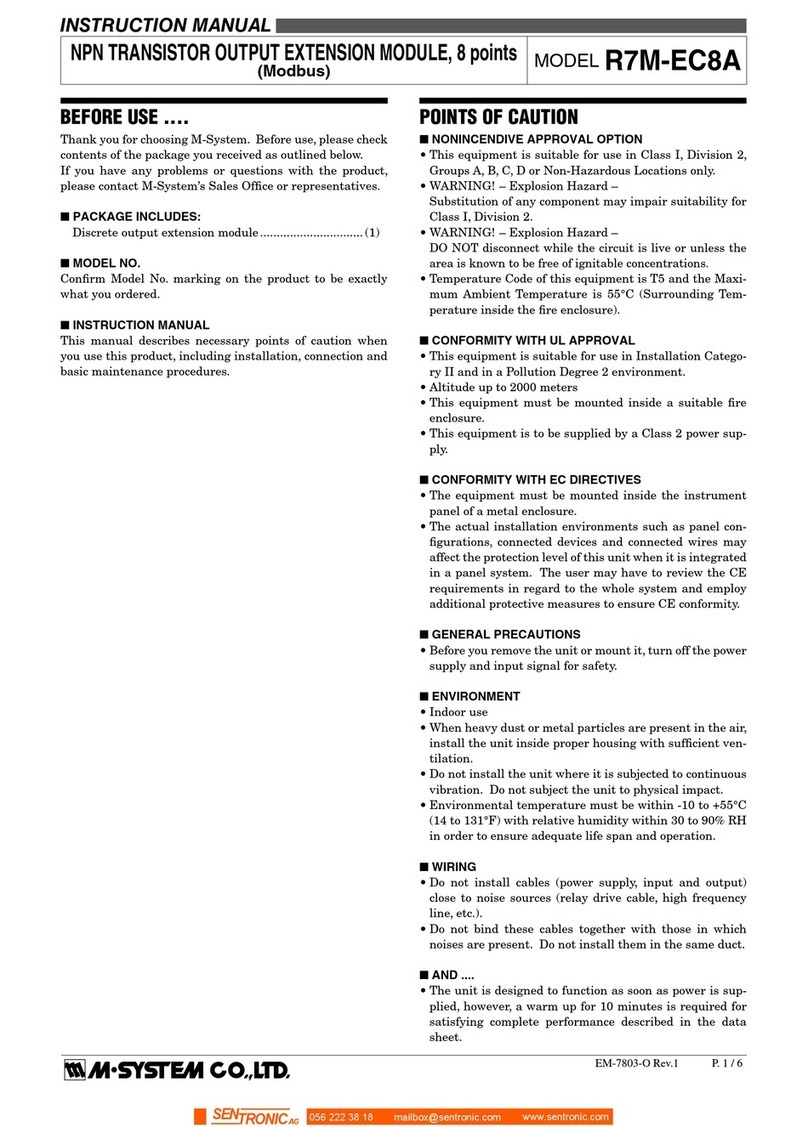
M-system
M-system R7M-EC8A/UL instruction manual

ADTRAN
ADTRAN T3 user manual
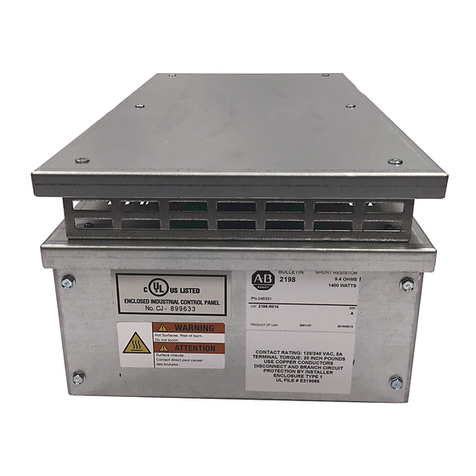
Rockwell Automation
Rockwell Automation Allen-Bradley Kinetix 5700 Series installation instructions

Emerson
Emerson Rosemount BP20E quick start guide
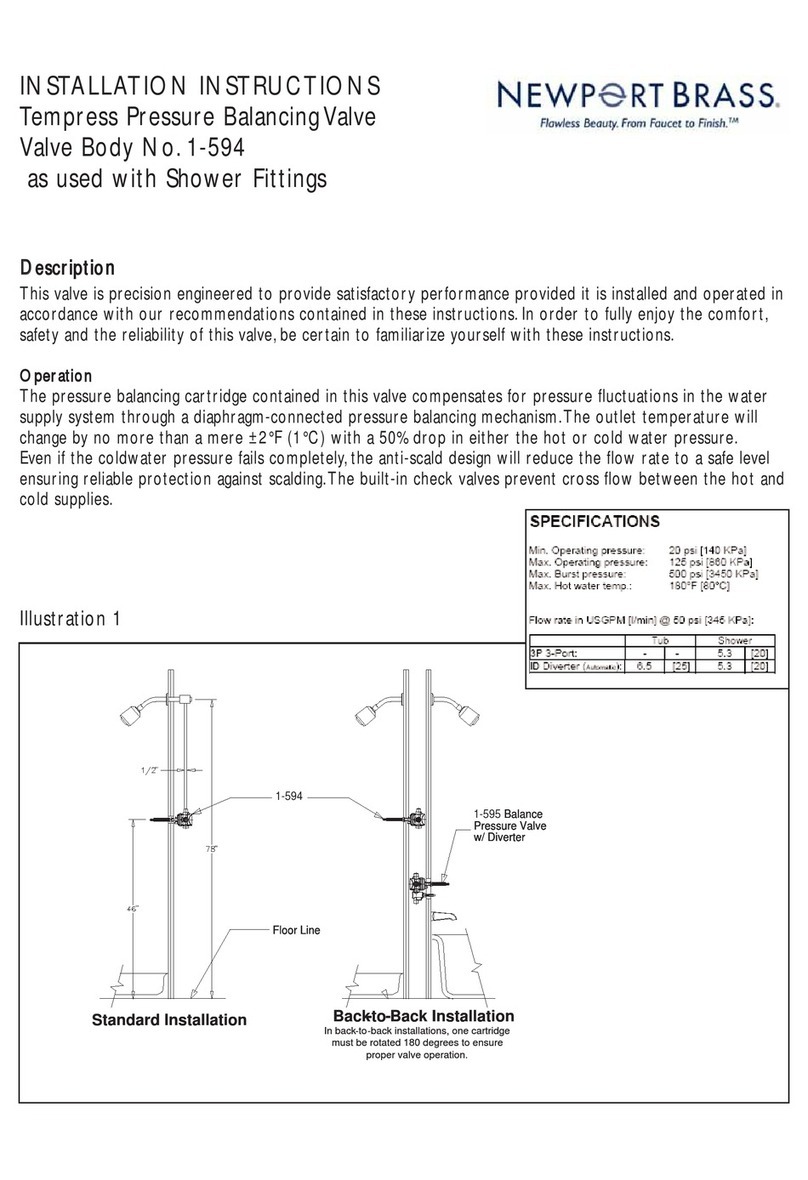
Newport Brass
Newport Brass 1-594 installation instructions
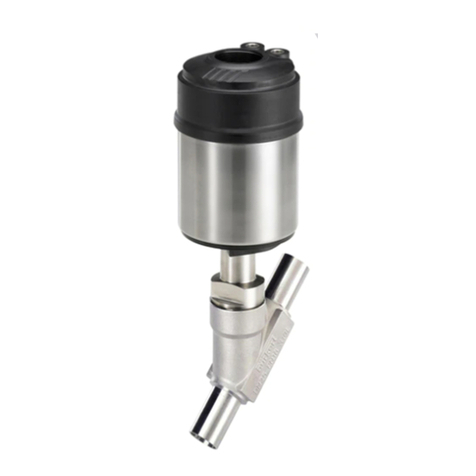
Burkert
Burkert 2300 Series operating instructions
